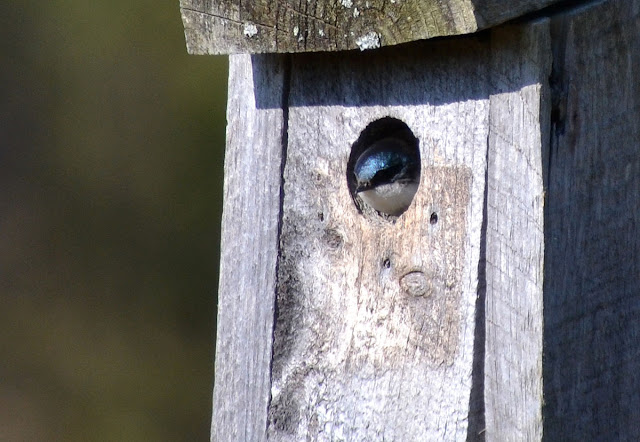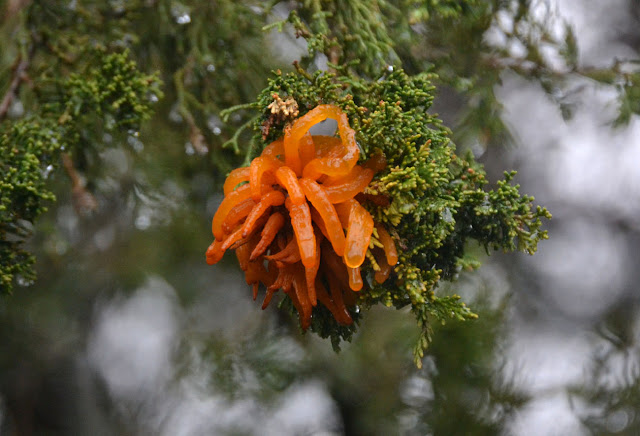I love the way the trees look now, with their new-green baby leaves -- and they were really showing off around this pond right in the middle of the forest:
In the fields, the Tree Swallows have definitely claimed their nest boxes (they may have left one box for the bluebirds, but I'm not sure about that). This pair seems to have a good setup, with one bird on guard duty on top of the box, and the other poking its head out of the hole (perhaps sitting on a nest?):
Hello, little bird!
While walking through the woods, I came across several of these little Duskywing (genus Erynnis) butterflies, and one was even kind enough to sit still for a picture:
As it turns out, these butterflies are actually in the skipper family, although you wouldn't know it from the way this creature is spreading its wings wide. A few of the Duskywings I saw today, however, did start to fold their wings back after they landed, approaching what I think of as a normal skipper pose. I just love those subtle markings on this creature's wings.
Also coursing through the air was the first dragonfly I've seen this year:
And not flying now, but certainly scarfing down food in preparation for eventual flight, was this mass of Eastern Tent Caterpillars:
For some reason, I used to think that tent caterpillars were an introduced/invasive species, but no, they're native. I think I was getting them confused with Gypsy Moths, which are absolutely non-native and very destructive. Tent caterpillars can certainly do damage, too, but I get the impression that they're much less of a concern than Gypsy Moths. And, I mean, that tent structure is pretty cool.
There were many, many flowers blooming this morning that I didn't see the last time I was in the area. A bunch of bumblebees were going crazy over a large patch of Wood Betony (Pedicularis canadensis), a low-growing plant that would be really easy to overlook:
Some of the Wood Betony's flowers were pale yellow, and others were more reddish -- from above, these flowers reminded me of little fireworks:
(Actually, I took that last picture, and then found a much, much better one that more closely shows the effect I was seeing in real life, on the Connecticut Botanical Society's website.)
I also found small clumps of Arrow-leaved Violet (Viola sagittata, or fimbriatula):
And fantastical Fringed Polygala:
In the woods, a single white lilac bush was blooming, most likely a garden escapee, but beautiful nonetheless:
Also perhaps escaped at some point from someone's garden, a large patch of Lily of the Valley was opening its blossoms:
And practically the rest of the forest floor was carpeted with the plant that is sometimes called False Lily of the Valley, or Canada Mayflower (Maianthemum canadense), also just barely starting to bloom:
For all the flowers that were already in bloom, there were many, many more buds. A good sign for things to come!




















































